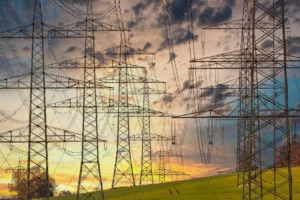Photo: Pixabay/neymark195
The energy sector helps the world go round, but that heavy power usage takes a toll on the planet. Many people either have considered or are considering upgrading their homes or businesses to be more energy-efficient.
Energy efficiency is top of mind for consumers, small businesses, large corporations, and local, state and federal governments. However, what’s stopping people from adopting efficient technologies? Do all populations have equal opportunities to become more energy-efficient?
The energy efficiency gap and its effects have marked impacts, but energy-as-a-service (EaaS) can help through widespread implementation in the United States and worldwide.
In simple terms, an energy efficiency gap describes the difference between actual and optimal levels. In other words, modern society has not yet realized how beneficial energy-efficient technologies and behaviors are, therefore slowing down widespread adoption.
Many people have tried to measure the energy efficiency gap using different methods. There are varying definitions of the optimal level, making it challenging to learn about the shortfall, determine how serious it is and create solutions to bridge it.
A 2017 paper titled “Assessing the Energy Efficiency Gap” in the Journal of Economic Literature discussed two versions of the gap and why people are hesitant, slow or resistant to switching to energy-efficient technologies.
One version explains the gap between what changes make financial sense and what they actually do. The second part suggests a gap between what people do and what changes are best for society and the planet.
Additionally, in partnership with the governor’s Energy Office of Maine, the Island Institute defines an energy efficiency gap on islands and rural communities. These areas deal with high power costs and face financial, geographic and awareness barriers, making it more challenging to invest in energy-efficient home upgrades.
Other regions are also targeting energy-efficient solutions. New York’s Clean Energy Standard sets a target for 50% of the power used in the state by 2030 should come from renewable sources. The ultimate goal is to achieve zero emissions by 2040.
Research suggests that people often cannot get the same energy services that use less power while minimizing costs. Market failures, high product prices and traditional behaviors contribute to the gap.
What is Energy-as-a-Service (EaaS)?
The energy efficiency gap has puzzled many researchers and policymakers. However, closing it can offer myriad benefits, so finding a viable solution is important as the sector changes due to digitization and decarbonization.

Countries strive to meet energy efficiency goals to limit the negative impacts of greenhouse gas (GHG) emissions, which contribute to climate change. Addressing barriers can save people money while using services that provide comfort and safety and contribute to a better environment.
One potential solution to help address the energy efficiency gap would be implementing energy-as-a-service (EaaS) solutions. EaaS is emerging as an innovative method organizations can leverage to meet two important priorities: leading competitively and responsibly and understanding the reality of their financial and operational challenges.
EaaS solutions allow customers to pay for energy services without making upfront payments. Most EaaS models work on a subscription basis, meaning devices owned by service companies deliver desired energy services to their customers. These solutions are adaptable and flexible in ways that centralized energy management is not.
Customers would benefit from EaaS solutions because they’d pay a recurring fee for their services without installing or maintaining energy-efficient technologies. Producers would also benefit from offering EaaS because it provides steady revenue streams and value.
Is widespread EaaS implementation possible?
Widespread EaaS implementation would depend on multiple factors, including consumer and societal shifts, political and regulatory responses, and technological, environmental and economic developments. Any widespread technology adoption requires several factors to align, and EaaS is no exception.
However, EaaS could serve as a significant disruptor in the energy sector. Consider how many consumers opt for service-based business models in product-based industries, such as streaming, wardrobe and wine delivery services. It makes sense that consumers are more willing to pay for home energy through a subscription plan than via traditional methods.
Reports show that customer interest in EaaS solutions exists, meaning various paths can be taken to bring them to the forefront.
However, what challenges may prevent widespread EaaS implementation? First, energy services companies will need to collaborate and be willing to form partnerships to bring these models to residential consumers.
Providers offering EaaS solutions will also need to be willing to market to residential consumers, as EaaS adoption has been limited to large corporations and big players in the municipal building, university, schools and hospital industries. As per Deloitte research, competition will likely intensify if more companies offer EaaS, and maintaining infrastructure could be another challenge.
Ultimately, the EaaS model could benefit service providers with steady revenue streams and allow customers to adopt energy-efficient technologies without significant capital investment.
As-a-service business models are growing in popularity, so it will be interesting to see how the energy sector responds to this trend. As for now, the EaaS model has a bright future with plenty of possibilities, which may become more achievable as technology advances.
Did you like it? 4.6/5 (25)








